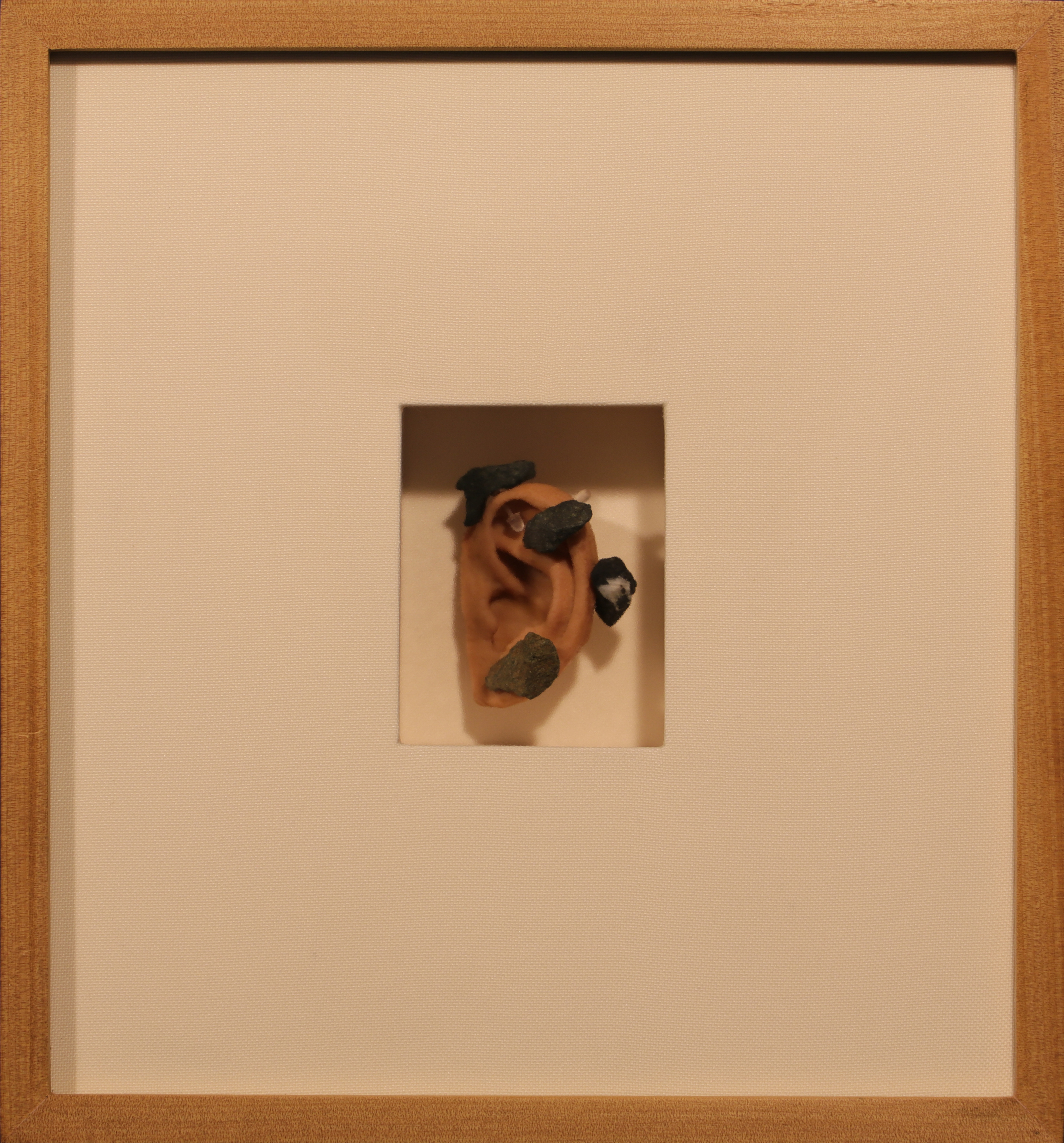



The hand, the secretary, a landscape
Small Gallery and 4th Floor Atrium
Cultural Center of the Philippines, Manila
7 Jun - 12 Aug 2018
A ray of light yawns, stretches, and embraces
the mouth of a plastic pot. The window nearby recognizes it as a fading
rainbow, and greets the child inside: look,
it is morning. The morning light teaches the child that fingers can be
maps. In Lesley-Anne Cao’s The hand, the
secretary, a landscape, an exploration of tactility is begun. With a
practice that involves itself with objects (their textures, their evocations,
their weights) and looking (its textures, its evocations, its weights), Cao encourages an investigation of how we come to make sense of what we
sense. A mirror, at a distance, coyly tells us what is inside: a blanket laid
down inside a crate, its only jangle its striking color. We build upon the
image of an ear with an image of an ear. The branch on the wall is both here
and elsewhere. Through production and reproduction, through both objects and
objection, Cao practices sight with us. We are guided through the exhibition by
semblances, slight gestures that point us somewhere. An expanse tucked away in
Cao’s mind, and perhaps ours, too. Or none at all. There is a whisper of the
word reach, meant as the achievement
of touch, even with the eye. In the end, we negotiate between our impulses. Do
we need to locate these objects in order to know something about where and what
they are? Are we to remember by site or by sight? Cao is pointing, but where.
Where you are now is a matter of pointing and not finding. Alas, the rainbow is
no longer the languishing light. The window saw through it, and it bent.
I. Gap
What
are our preoccupations when it is posited to us: two trains depart, coming from different cities, and are heading toward
each other at different speeds. When and where do they meet? In the end, we
preoccupy ourselves with: how do
we solve for distance? For time? We no longer question the relation between
the two cities, the two trains, their two speeds. In answering, we rush towards
the trains’ meeting point, and in the process, rush the trains towards each
other.
II. Lesson
Rene
Magritte writes in 1936, “I awoke in a room in which a cage and the bird
sleeping in it had been placed. A magnificent error caused me to see an egg in
the cage instead of the bird.” This upset of reality became a conscious spark
for the continuation of the “object-lesson”: images and pictures and objects no
longer served as the answers to a spectator’s questioning eyes. We make errors
in sight and in finding these images. Instead, in a growing hush of whispers
and pauses, new and newer questions crowd and occupy the gallery.
III. Expanse
The
occupation of terrain by questions continues to this day, and we encounter this
pre-occupation as we walk across this space. Cao lays down for us several
objects and pictures and gestures for our hand. However, we are not led to
where these objects are. Cao leaves such to the inevitable affinities we will
find between them. The hive peeks from where it is and bares itself on a wall,
and perhaps the ear waits for a buzzing. The blanket will sound when disturbed,
ringing in a color not unlike the hive. (Michelle Esquivias)
Brochure
Press 1, 2, 3, 4, 5
Ateneo Art Awards 2019 Exhibition
Ateneo Art Gallery, Areté, Quezon City
6 Aug - 27 Oct 2019
Documentation by Miguel Lorenzo Uy (1, 2, 4-13, 15)